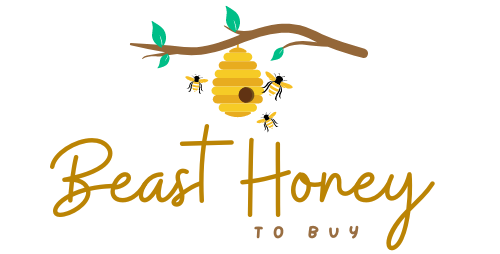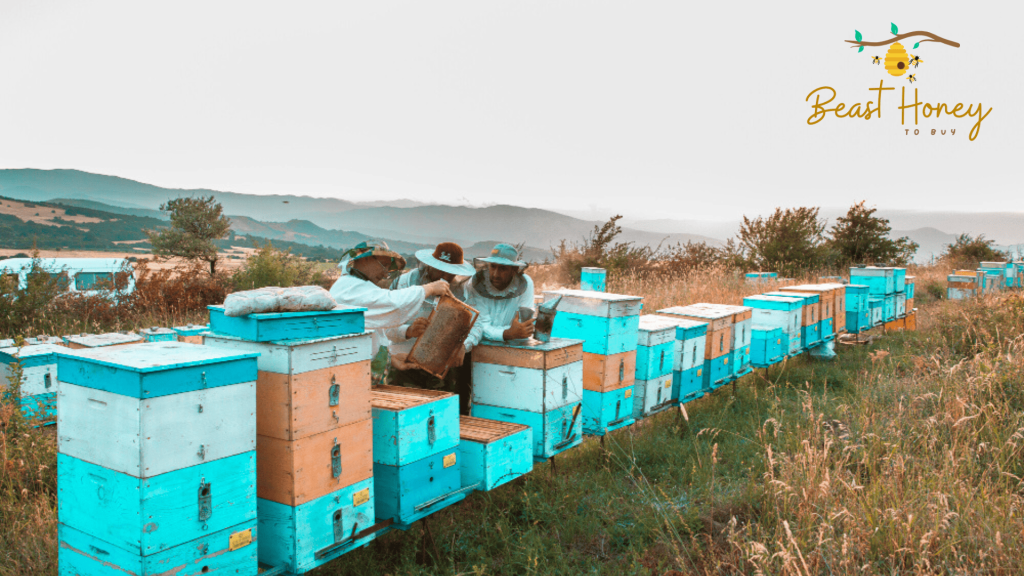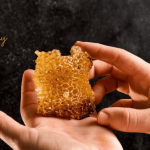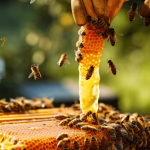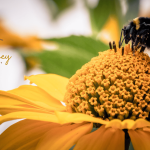Bees are tiny heroes of our planet. They pollinate crops, support ecosystems, and make delicious honey. But bees are in trouble due to pesticides, habitat loss, and climate change. Eco bee farms are stepping up to save them! In this post, I’ll explain how these farms protect bees and the environment. You’ll learn why their work matters and how you can help. Let’s dive in!
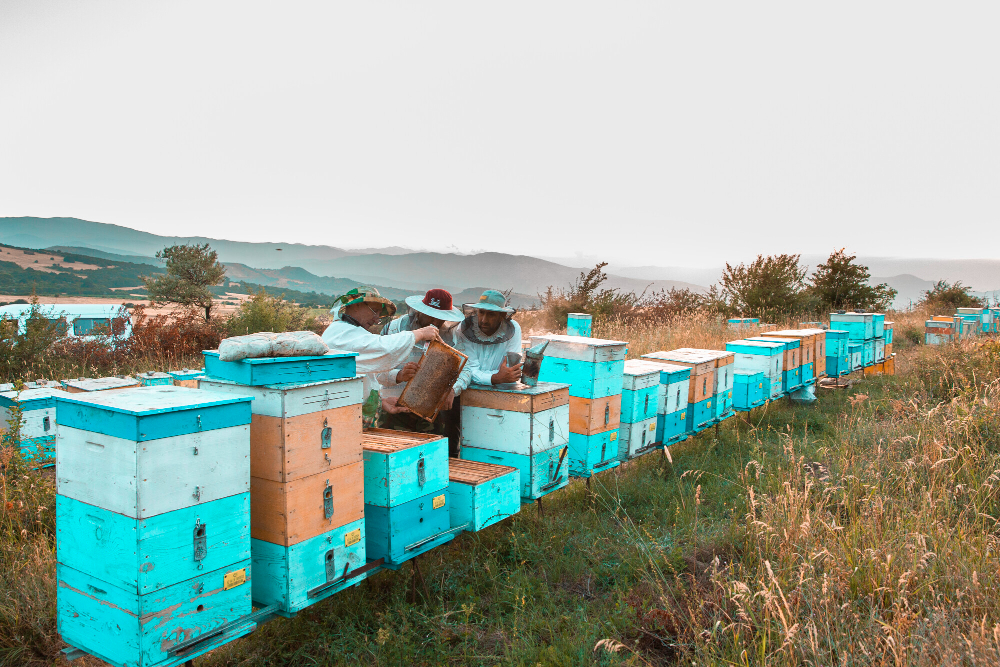
Why Bees Matter to the Planet
Bees do more than make honey. They pollinate about 80% of flowering plants, including one-third of our food crops. Without bees, we’d lose fruits, vegetables, and even coffee! They also support wild ecosystems by helping plants reproduce. Sadly, bee populations are declining fast. Eco bee farms are fighting to change that.
The Role of Bees in Food and Nature
Here’s why bees are so important
- Food production: They pollinate crops like apples, almonds, and berries.
- Ecosystem health: Bees help wildflowers grow, supporting birds and other wildlife.
- Economic impact: Pollination adds billions to agriculture yearly.
- Biodiversity: Healthy bee populations keep ecosystems diverse and strong.
I was shocked to learn that one in three bites of food depends on bees! Their decline is a big deal.
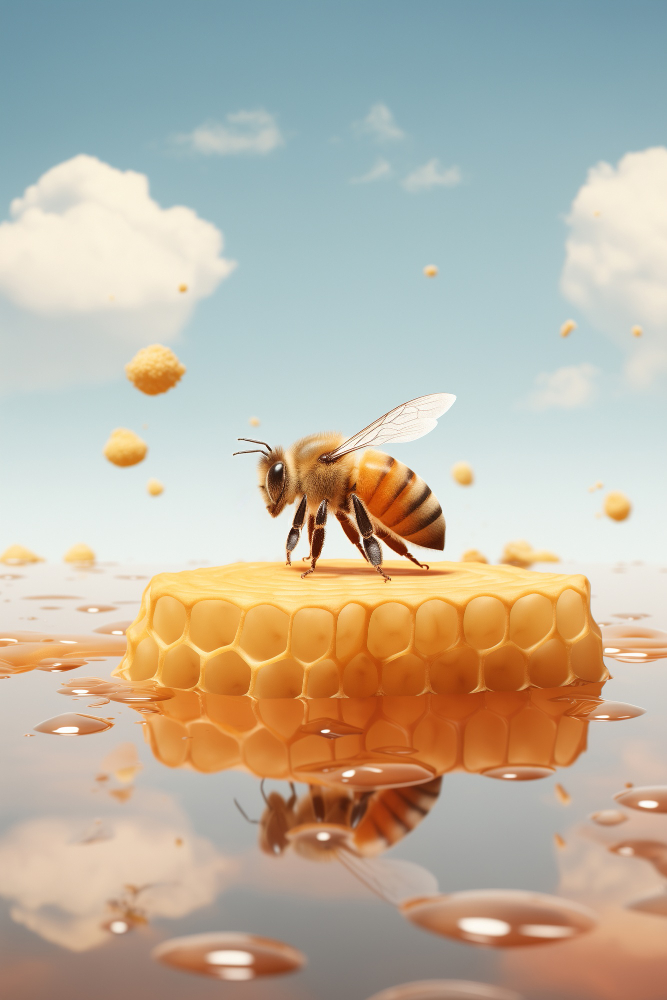
What Are Eco Bee Farms?
Eco bee farms are beekeeping operations that focus on sustainability. They prioritize bee health, organic practices, and environmental protection. Unlike commercial farms that may stress bees, eco farms work with nature. They avoid harmful chemicals and create habitats for bees to thrive. Their mission is to save bees while helping the planet.
How Eco Bee Farms Protect Bees
Eco bee farms use smart, bee-friendly practices. Here are some ways they’re making a difference:
1. Avoiding Harmful Pesticides
Pesticides like neonicotinoids harm bees’ nervous systems. Eco farms skip these chemicals entirely. They use natural pest control methods, like companion planting or beneficial insects. This keeps bees safe and healthy.
- Example: A farm I visited uses ladybugs to control pests instead of sprays. The bees were buzzing happily!
2. Creating Pollinator-Friendly Habitats
Eco farms plant native wildflowers and flowering shrubs. These provide nectar and pollen year-round. They also leave patches of land unmowed to create safe nesting spots. This supports both honeybees and native bees.
- Example: One farm turned a field into a wildflower meadow. It was full of bees and butterflies!
3. Supporting Native Bees
Honeybees get a lot of attention, but native bees are just as vital. Eco farms protect species like bumblebees and mason bees. They build “bee hotels” for solitary bees and preserve natural habitats. This boosts biodiversity.
- Why it matters: Native bees pollinate crops that honeybees don’t, like tomatoes and blueberries.
4. Practicing Sustainable Beekeeping
Eco farms let bees live naturally. They avoid over-harvesting honey or stressing colonies. They use wooden hives and check them gently to keep bees calm. This ensures strong, healthy hives.
- Example: My local eco farm rotates hives to different flower fields for diverse nectar. The honey tastes amazing!
5. Educating Communities
Eco farms teach people about bees. They host workshops, school visits, and tours. This inspires others to plant bee-friendly gardens or avoid pesticides. Spreading awareness is key to saving bees.
- Example: I attended a farm’s “Bee Day” event. Kids loved learning how to make seed bombs for wildflowers!
How Eco Bee Farms Help the Planet
Saving bees has a ripple effect on the environment. Eco farms contribute in big ways:
1. Promoting Organic Farming
Eco farms often partner with organic farmers. They provide pollination services for chemical-free crops. This reduces pesticide use and supports healthier soil and water.
2. Fighting Climate Change
Bees help plants like grasslands store carbon in their roots. Eco farms protect these ecosystems by planting native species. More bees mean more plants, which means less carbon in the air.
3. Boosting Biodiversity
By supporting bees, eco farms help other wildlife. Pollinated plants produce seeds and fruit that feed birds, insects, and mammals. This creates a balanced, thriving ecosystem.
4. Reducing Soil Erosion
Eco farms plant diverse crops and wildflowers. These plants have deep roots that hold soil in place. This prevents erosion and keeps waterways clean.
- Example: A farm near me planted clover fields. The soil stayed rich, and the bees loved it!
Challenges Facing Eco Bee Farms
Eco farms do amazing work, but they face hurdles
- High costs: Organic practices and habitat creation are expensive.
- Climate change: Unpredictable weather affects flower blooms and bee foraging.
- Pesticide drift: Nearby farms using chemicals can harm bees.
- Limited awareness: Many people don’t know how to support bees.
Despite these challenges, eco farms keep pushing forward. Their passion for bees is inspiring!
How You Can Support Eco Bee Farms
Want to help? Here are easy ways to support eco bee farms and their mission:
1. Buy Local Honey
Purchase raw, organic honey from eco farms. This supports sustainable beekeeping and tastes better than store-bought. Check farmers’ markets or farm websites.
- Tip: Look for labels saying “raw” or “unfiltered” for the best quality.
2. Plant a Bee-Friendly Garden
Grow native flowers like sunflowers, lavender, or marigolds. Avoid pesticides and let some weeds, like dandelions, bloom. Even a small balcony garden helps!
- Example: I planted a few pots of wildflowers on my patio. Bees visit daily!
3. Support Bee-Friendly Policies
Advocate for bans on harmful pesticides like neonicotinoids. Sign petitions or vote for eco-friendly leaders. Your voice can make a difference.
4. Spread Awareness
Share what you learn about bees with friends and family. Post about eco farms on social media. Encourage others to support pollinators.
- Example: I shared a farm’s tour photos online, and three friends started bee gardens!
5. Sponsor a Hive
Some eco farms offer hive sponsorship programs. You can fund a hive and get honey or updates in return. It’s a fun way to get involved.
Why Eco Bee Farms Are Budget-Friendly
Supporting eco farms doesn’t have to cost much. A jar of local honey costs $5-$15, cheaper than many grocery store brands. Planting a few wildflower seeds is under $10. These small actions add up to big impact without breaking the bank.
Safety and Precautions
Eco bee farms are safe for most, but keep these in mind
- Allergies: Check for honey or pollen sensitivities before using products.
- Kids under 1: Avoid raw honey due to botulism risk.
- Bee stings: Stay calm near hives and wear protective gear if visiting.
- Pesticide exposure: Ensure your garden is chemical-free to protect bees.
Frequently Asked Questions
Why are bees declining?
Bees face threats from pesticides, habitat loss, climate change, and diseases. Eco farms tackle these issues with sustainable practices.
How do eco farms differ from regular farms?
Eco farms prioritize bee health, avoid chemicals, and create habitats. Regular farms may focus on profit over sustainability.
Can I start my own eco bee farm?
Yes! Start small with a hive, research sustainable practices, and join local beekeeping groups for support.
Where can I find eco bee farms?
Check farmers’ markets, local directories, or online for farms near you. Many have websites or social media pages.
Final Thoughts
Eco bee farms are doing incredible work to save bees and the planet. Their sustainable practices protect pollinators, boost biodiversity, and fight climate change. By supporting them, you’re helping ensure a healthier future for food, ecosystems, and communities. Whether it’s buying local honey or planting a bee garden, every action counts.
Have you visited an eco bee farm or tried their honey? Share your story in the comments! Let’s keep the buzz going!
For more information, visit , https://besthoneytobuy.com/
